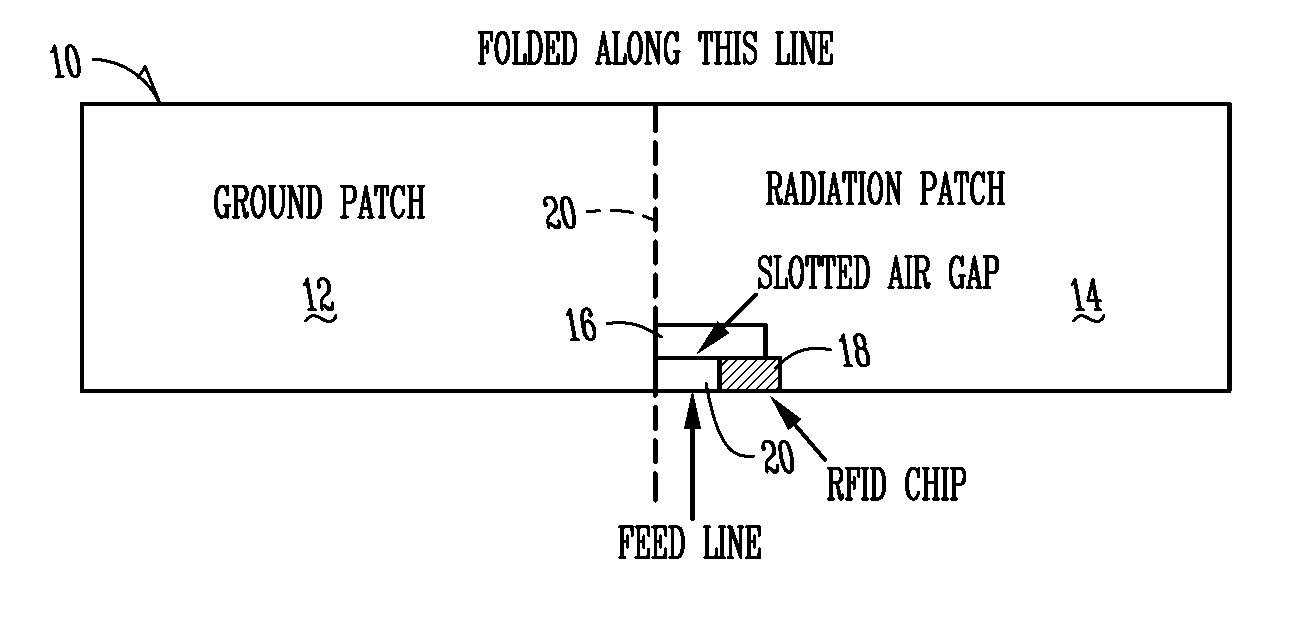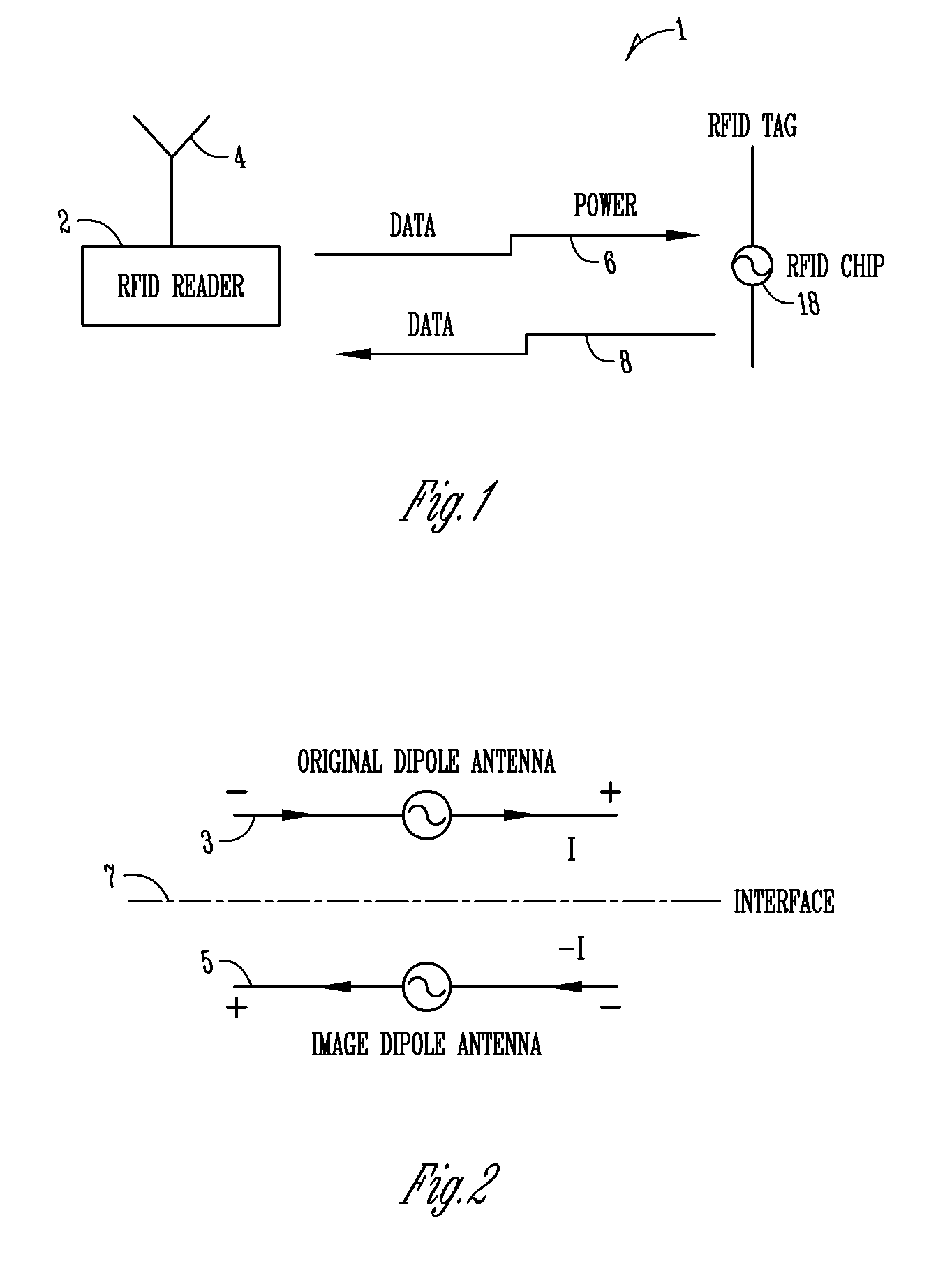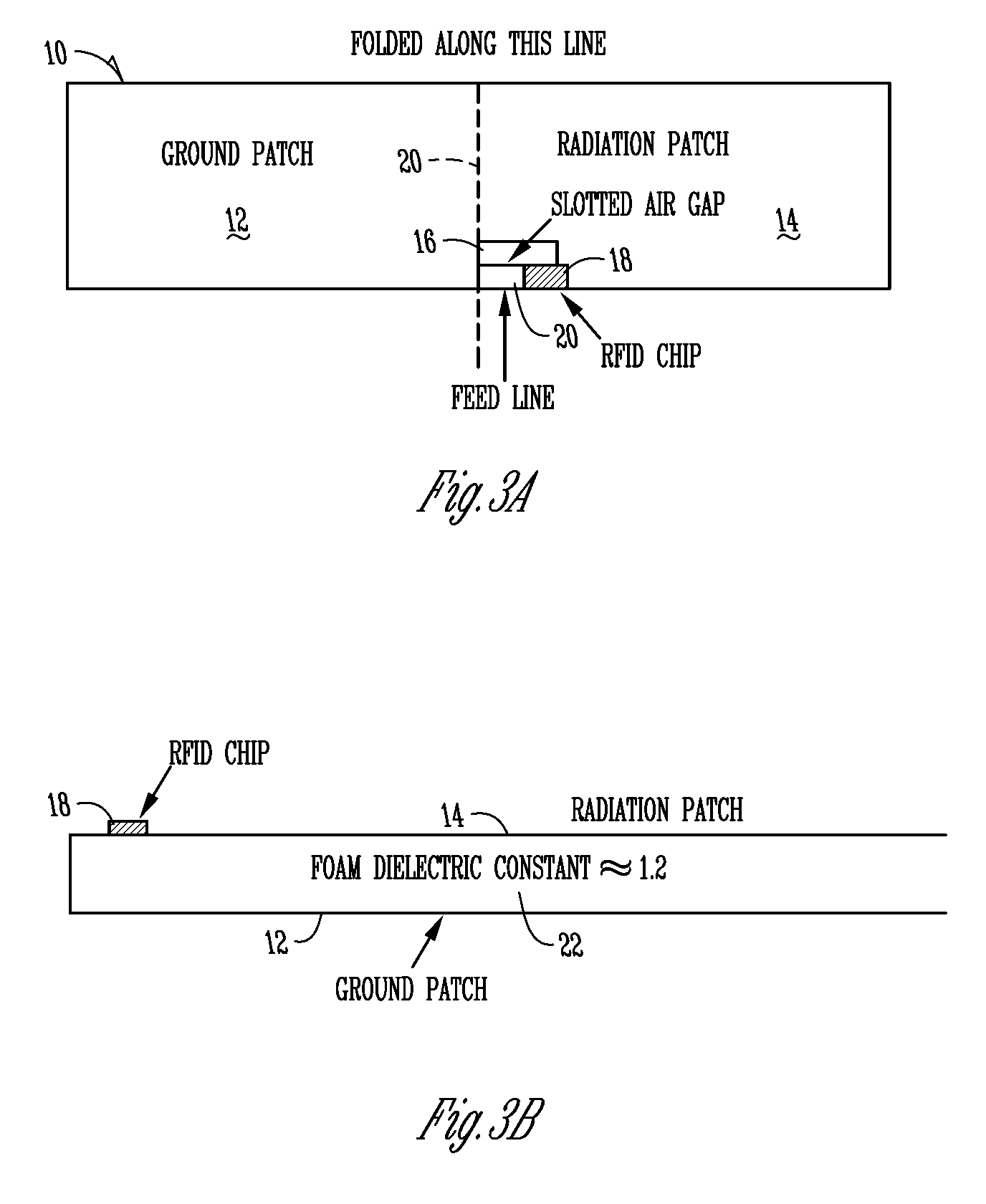Low profile metal-surface mounted RFID tag antenna
a metal surface mounted, low-profile technology, applied in the direction of instruments, electrical signalling details, burglar alarm mechanical actuation, etc., can solve the problems of inability to read rfid tags, inability to capture data and power from readers, large area and height, etc., to achieve convenient operation, convenient operation, and compact size
- Summary
- Abstract
- Description
- Claims
- Application Information
AI Technical Summary
Benefits of technology
Problems solved by technology
Method used
Image
Examples
Embodiment Construction
[0035]The present invention provides an RFID tag which is suitable for use on a metal or other type of conductive surface and which is economical and convenient to manufacture. By using a slotted inverted-L structure, the present invention provides a solution to this long unsolved problem with verifiable performance.
[0036]According to one aspect of the present invention a high efficiency metal-surface mounted radio frequency identification (RFID) tag antenna is provided which is operated in the ultra high frequency (UHF) band. The antenna has a slotted inverted-L shape. As used herein, the term “structure” when used to describe an antenna, describes its geometrical configuration. Thus, the antenna structure may be described as having a slotted inverted L-shape. The antenna allows for a compact size, low profile, and excellent reading range. The antenna is built on foam with 64 mils thickness and tested by a Symbol RFID handheld reader (MC9000-G) with 4 W EIRP. The reading range is m...
PUM
 Login to View More
Login to View More Abstract
Description
Claims
Application Information
 Login to View More
Login to View More - R&D
- Intellectual Property
- Life Sciences
- Materials
- Tech Scout
- Unparalleled Data Quality
- Higher Quality Content
- 60% Fewer Hallucinations
Browse by: Latest US Patents, China's latest patents, Technical Efficacy Thesaurus, Application Domain, Technology Topic, Popular Technical Reports.
© 2025 PatSnap. All rights reserved.Legal|Privacy policy|Modern Slavery Act Transparency Statement|Sitemap|About US| Contact US: help@patsnap.com



